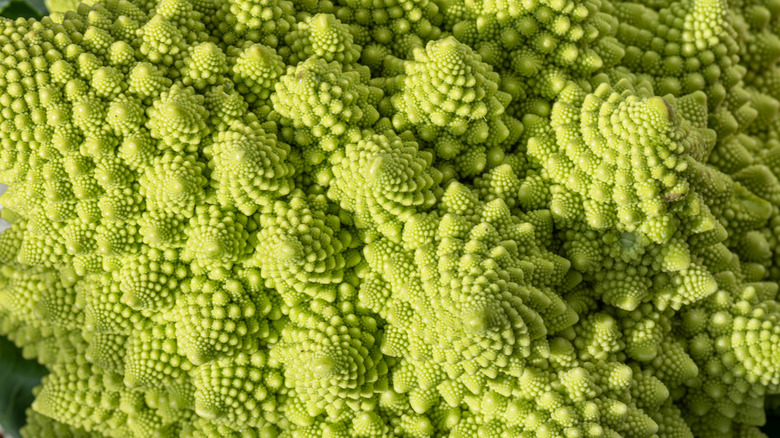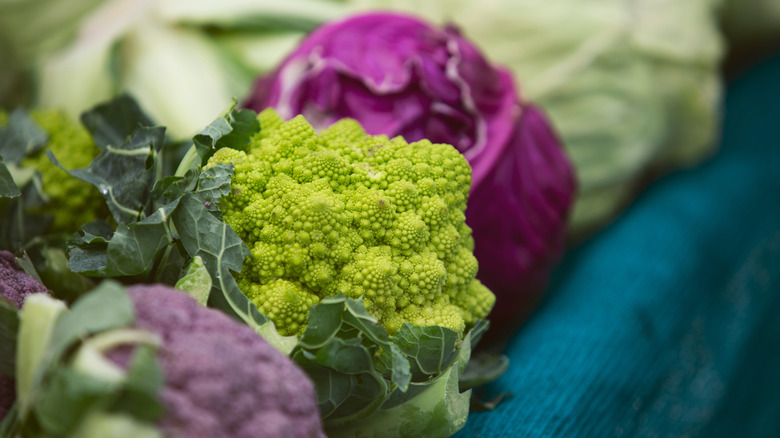Romanesco Vs Broccoli: What Exactly Is The Difference?
Romanesco is pretty much the only brassica that regularly appears as a computer screensaver. Math and vegetable lovers alike can appreciate its gorgeous pale green fractal florets — a mesmerizing natural example of a Fibonacci sequence. But aside from its striking appearance, what actually sets romanesco apart from regular old broccoli?
Romanesco broccoli, also known as Roman cauliflower or fractal broccoli, looks like what would happen if broccoli and cauliflower had a beautiful baby. Botanically, the photogenic pale green vegetable is actually closer to cauliflower than broccoli – technically, it's a cultivar of cauliflower. However, all three cruciferous veggies are members of the highly nutritious brassica family, a category that also includes fan favorites such as Brussels sprouts (which are even tastier with hot honey) and bok choy.
Romanesco has a much sweeter and milder flavor than regular broccoli, which, combined with its natural good looks, might convince even the most staunch veggie haters to try a bite. Nutrition-wise, romanesco is quite comparable to broccoli and cauliflower. The veggie is rich in vitamin C, vitamin K, and dietary fiber, and is also a good source of calcium and iron.
How to cook with romanesco
Cooking with romanesco is very similar to cooking with broccoli and cauliflower. It can easily be subbed into almost any recipe where you would use its cruciferous cousins, but it does have a slightly nuttier flavor and firmer texture than broccoli or cauliflower. Additionally, as much as we love a good broccoli-cheese soup, we think romanesco is best prepared raw or lightly cooked to preserve its mesmerizing fractals. Romanesco is especially wonderful in pasta and stir-fries, simply roasted (ideally with ranch seasoning, which is roasted vegetables' best friend), or sliced up and served raw as the star of any salad or crudité platter.
Romanesco looks straight out of a sci-fi movie — and in fact, it even made a cameo as a bar snack in "Star Wars: The Force Awakens." In reality, however, the gorgeous geometric veggie originated in Italy hundreds of years ago. Evidence suggests that romanesco was bred by farmers in the Lazio region of central Italy as far back as the 16th century. This is where it gets the "Roman" part of its name from, since Rome is Lazio's capital.
The cauliflower cultivar was introduced to the United States in the 1900s, and has been growing in popularity ever since. However, because romanesco only grows in a few temperate climates, it remains a somewhat rare find at major supermarkets. If you are lucky enough to spot this eye-catching and unusual farmers market vegetable when grocery shopping, you'll definitely want to snag a head or two.

